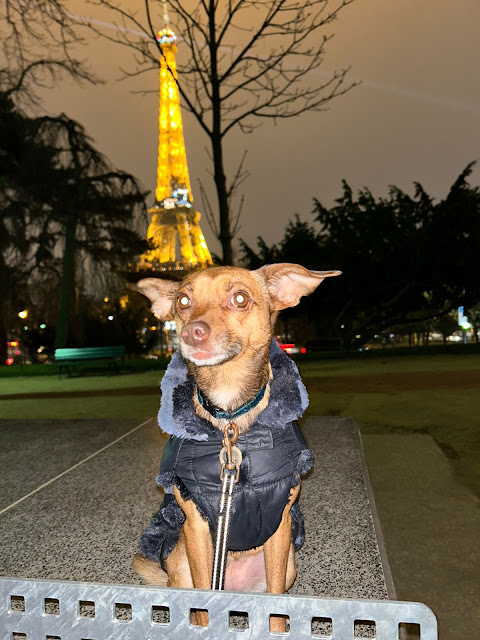Paris is divided into 20 administrative districts called arrondissements. Made up of smaller named neighborhoods, each numbered arrondissement has its own economic, social and cultural flavor--distinctive from one another without ever losing their common Parisien-ness (Parisienité?).
Our apartment is in the 16th (seiziéme or 16e) arrondissement. Compared to the Champs-Elysées luxury of the 8th, the cultural magnificence of the the 1st (home of the Louvre) or the academic bohemianism of the 5th and 6th, the 16th is considered a bit bourgeois--sleepy, even boring. It's primarily residential, with little to draw tourists--the major exception is the Jardins du Trocadéro, with its wide open vista of the Eiffel Tower.
 |
| Sugar at Trocadéro |
For me, being outside of the tourist core--but still within easy transit of the entire city--was one of the 16th's main assets. We enjoy quintessentially French institutions like the open-air marchés, boulangeries, parcs and bistros, but keep much of the village feel left over from the incorporation of Auteuil and Passy into the city of Paris.
 |
| Boulangerie |
 |
| Marché Rue Gros |
 |
| Fromagerie at the marché |
 |
| Le poisson |
Technically (or traditionally, I guess), we live at the eastern edge of Auteuil, near the Seine river (across from the 15th), and just south of Passy. Given this liminal area, we're neither within Auteuil's old village commercial area or tucked among Passy's grand blocks of Haussmanian architecture.
It's a bit homely, basically. But our apartment is in good shape in a well-maintained building, and we walk easily to the the Seine, the Trocadéro, the Jardin du Ranelagh, the Bois de Boulogne, and to buses and subways that take us to the core of Paris in less than a half hour.
 |
| The Mirabeau metro station |
There may or may not be a legacy of werewolves in the 16th.










Comments
Post a Comment